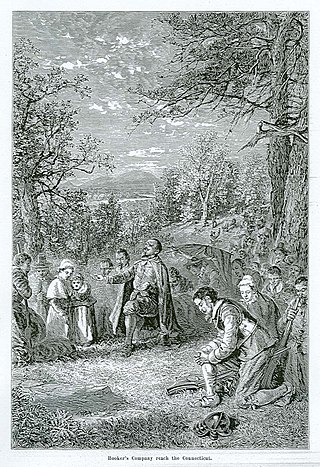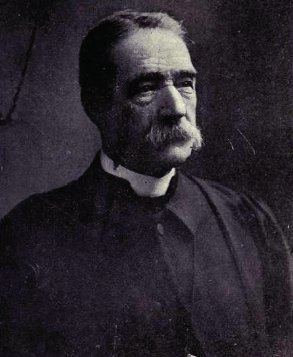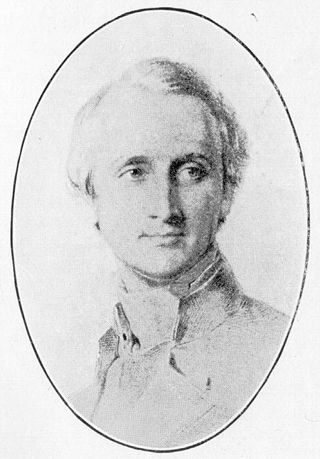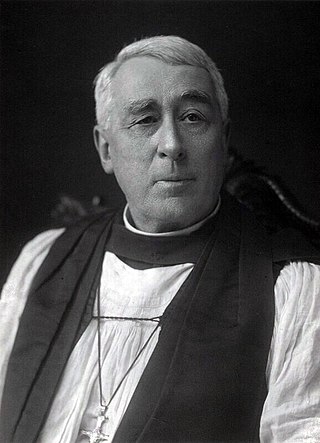
Thomas Hooker was a prominent English colonial leader and Congregational minister, who founded the Connecticut Colony after dissenting with Puritan leaders in Massachusetts. He was known as an outstanding speaker and an advocate of universal Christian suffrage.
Lecturer is an academic rank within many universities, though the meaning of the term varies somewhat from country to country. It generally denotes an academic expert who is hired to teach on a full- or part-time basis. They may also conduct research.

William Robinson Clark was a Scottish-Canadian theologian.

The Supreme Governor of the Church of England is the titular head of the Church of England, a position which is vested in the British monarch. Although the monarch's authority over the Church of England is largely ceremonial and is mostly observed in a symbolic capacity, the position is still relevant to the church. As the supreme governor, the monarch formally appoints high-ranking members of the church on the advice of the prime minister of the United Kingdom, who in turn acts on the advice of the Crown Nominations Commission. Since the Act of Settlement of 1701, all Supreme Governors have been members of the Church of England.
Robert Browne was the founder of the Brownists, a common designation for early Separatists from the Church of England before 1620. In later life he was reconciled to the established church and became an Anglican priest.

Ripon College Cuddesdon is a Church of England theological college in Cuddesdon, a village 5.5 miles (8.9 km) outside Oxford, England. The College trains men and women for ministry in the Church of England: stipendiary, non-stipendiary, local ordained and lay ministry, through a wide range of flexible full-time and part-time programmes.

George Hills was a Canadian Anglican bishop.

The Great Ejection followed the Act of Uniformity 1662 in England. Several thousand Puritan ministers were forced out of their positions in the Church of England following the Restoration of Charles II. It was a consequence of the Savoy Conference of 1661.

John Christopher "Aidan" Nichols is an English academic and Catholic priest.

Sir Bernard Walter Silverman, is a British statistician and former Anglican clergyman. He was Master of St Peter's College, Oxford, from 1 October 2003 to 31 December 2009. He is a member of the Statistics Department at Oxford University, and has also been attached to the Wellcome Trust Centre for Human Genetics, the Smith School of Enterprise and the Environment, and the Oxford-Man Institute of Quantitative Finance. He has been a member of the Council of Oxford University and of the Council of the Royal Society. He was briefly president of the Royal Statistical Society in January 2010, a position from which he stood down upon announcement of his appointment as Chief Scientific Adviser to the Home Office. He was awarded a knighthood in the 2018 New Years Honours List, "For public service and services to Science".
James Mudge (1844–1918) was an American Methodist Episcopal clergyman and writer, nephew of Zachariah Mudge. He was born at West Springfield, Mass., and graduated from Wesleyan University in 1865 and from Boston University School of Theology in 1868. The same year he entered the ministry, joining the New England conference. While a missionary in India from 1873 to 1883 he edited the Lucknow Witness. After his return he was pastor of churches in Massachusetts until 1908, serving also as lecturer on missions at the Boston University School of Theology. In 1889 he became secretary of the New England conference. For many years he was book editor of Zion's Herald. He wrote:
Roger Weseham was an English medieval Bishop of Coventry and Lichfield.

William Shuckburgh Swayne (1862–1941) was a Church of England bishop and author who served as Dean of Manchester then Bishop of Lincoln in the first half of the 20th century.
Robert Cecil Mortimer was an Anglican bishop in the Church of England.
Christopher M. Tuckett is a British biblical scholar and Anglican priest. He holds the Title of Distinction of Professor of New Testament Studies at the University of Oxford and is a Fellow of Pembroke College, Oxford.
Charles Wheatly (1686–1742) was an English clergyman, known for writings on the Book of Common Prayer.
Richard Henry Malden, BD,, Dean of Wells, was a prominent Anglican churchman, editor, classical and Biblical scholar, and a writer of ghost stories.
A rector is, in an ecclesiastical sense, a cleric who functions as an administrative leader in some Christian denominations. In contrast, a vicar is also a cleric but functions as an assistant and representative of an administrative leader.
Henry William Watkins was an Anglican priest, academic and author.








